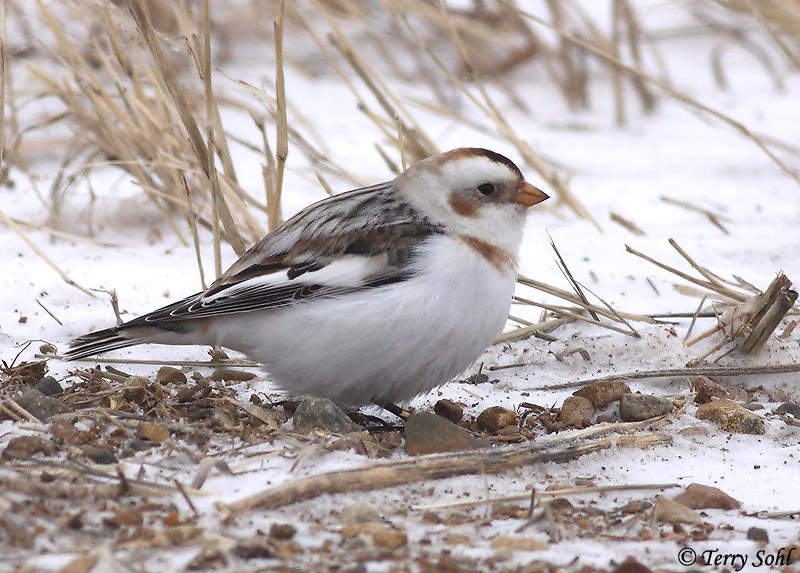Blog - General
Snow Bunting Facts
Fun Facts About Snow Buntings
- The male Snow Bunting returns to its high Arctic breeding grounds in early April, when temperatures can still dip as low as -30° C (-22° F) and snow still covers most of the ground. The female does not return until four to six weeks later.
- Early arriving Snow Bunting males set up and defend territories that include good nesting sites. They will still come together in flocks to forage, and usually roost in loose groups of from 30 to 80 birds.
- The Snow Bunting places its nest deep in cracks or other cavities in rocks. Although such nest sites are relatively secure from predators, rocks are cold. The thick nest lining of fur and feathers helps keep the eggs and nestlings warm, but the female must remain on the nest for most of the incubation period. The male feeds her while she is incubating so that she does not need to leave the nest very often.
- Although breeding and nonbreeding males look quite different, the Snow Bunting has only one molt each year and no true “Alternate Plumage.” After the molt in the late summer the male looks brownish with a brown and black striped back. Underneath the colored feather tips, the back feathers are pure black and the body feathers all are white. The male wears off all of the feather tips by actively rubbing them on snow, and he is immaculate white and jet black by the time breeding begins.
